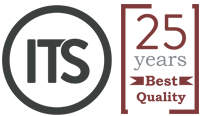Online Translation Courses
General Translation into Spanish and vice versa combined with: English, French, German, Italian and Dutch.
Language Levels
Before you start one of our translation courses, we recommend you verify that you have reached at least a B2 level of the Common European Frame of Reference for Languages (CEFRL) of your foreign language. We do not teach the basic skills of a foreign language, but we do teach you how to translate!
The translation courses are organized in three different levels:
Level 1: recommended for people who have never translated before
Level 2: recommended for translation students or individuals who would like to improve their translation skills
Level 3: recommended for professional translators who would like to be brought up-to-date or practice their foreign language comprehension or writing skills.


What Does the Course Include?
Introduction to translation theory and tools
4 texts in Spanish, English, French, German, Italian or Dutch. Each text has 700 words approximately and will take you about two hours to translate and send it to your teacher.
All our ITS teachers are professional native experienced translators. You will receive personal correction and comments from them.
A unique ITS certificate, which certifies your level and practical experience as a translator.
Price: 250 € /month
Starting from scratch
If you start with no previous knowledge, i.e. as a beginner, and you follow a general online Spanish course (10 hours per week) , you will attain a basic level in one month and an advanced level in 9 months or one year.
The following gives you an idea of the average duration of learning Spanish as a foreign language by levels, starting at the beginning:
A1: 4 weeks
A2: 8 weeks
B1: 12 weeks
B2: 20 weeks
C1: 28 weeks
C2: 36 weeks
Attaining Spanish levels
Starting from level A1 (Introduction) and continuing progressively until C2 (Advanced): 36 weeks or 9 months.
If your level is: Introduction A1
You will be able to understand easy texts and participate in basic conversations. You can introduce yourself, explain where you live, who your family members are, or go shopping for clothes or food without having much trouble. You know how to express your preferences, to talk about the weather, a trip, or even the past. If people do not speak too fast, you can understand everything they say.
At the Elemental A2 level
You can tackle everyday situations during your stay in Spain. It is then when you learn how to talk in the past or future tense; you can understand the newspapers or go to a chemist’s. Your level is that of survival +.
At the Intermediate B1 level
You will improve your knowledge of grammar and vocabulary and will be able to speak Spanish much more fluently. You will have a vocabulary of around 2500 words. You will be able to talk about your experiences, your tastes and your wishes, or watch a film/movie in Spanish. You will understand almost everything.
At the Advanced B2 level
You will have a wide knowledge of the language and you will feel much better talking to your Spanish friends about customs and habits. You will be able to make complicated sentences, using the subjunctive tense correctly. You can express your wishes and feelings and you learn how to use the verb TO BE (“ser and estar”) correctly. You will understand almost everyone even if they speak fast.
At the highest levels, Superior C1 and Advanced C2
We work on the grammar and vocabulary so you can speak Spanish fluently with accuracy and spontaneity in any situation. We emphasize the written language. You also learn expressions from Latin America. The Spanish language has no secrets for you!
Common European Frame of Reference for Languages (CEFRL)
The teaching of foreign languages is organised on six levels according to the Common European Frame of Reference for Languages (CEFRL)
What is the Common European Frame of Reference for Languages (CEFRL)?
In the “CEFRL” we can see there are six levels: A1 and A2 (basic); B1 and B2 (independent user); C1 and C2 indicate a perfect command of the language.
The CEFRL defines the criteria in order to measure the knowledge of all languages in the European Union. It will therefore be our link when we have to establish the objectives for each student. It is interesting to be familiar with the levels according to their linguistic and grammar contents.
These are the following ones:
A1. Access Level
A2. Platform Level
B1. Intermediate
B2. Upper intermediate
C1. Effective Operational Proficiency
C2. Advanced
What are the technical abilities and skills assessed?
The CEFRL establishes a series of criteria that are valid for all European languages as far as teaching, learning and evaluating languages is concerned.
For more information about MCER click here: https://cvc.cervantes.es/ensenanza/biblioteca_ele/marco/cap_03_02.htm

What about a “virtual coffee” as we used to have it in Spain, and we discuss all details of your course?
You can ask any question to your teacher and check your skype, meet or zoom connection.
Please, send us your name and e-mail address and one of our teachers will get back to you to schedule a call for free.
They will explain you how we work, how the course will be organized, which material we use, how your skills will be developed during the tuition hours….
We look forward to hearing from you soon!


